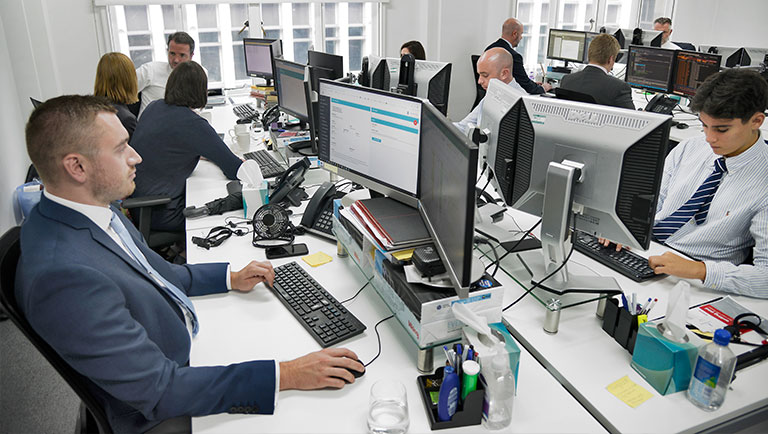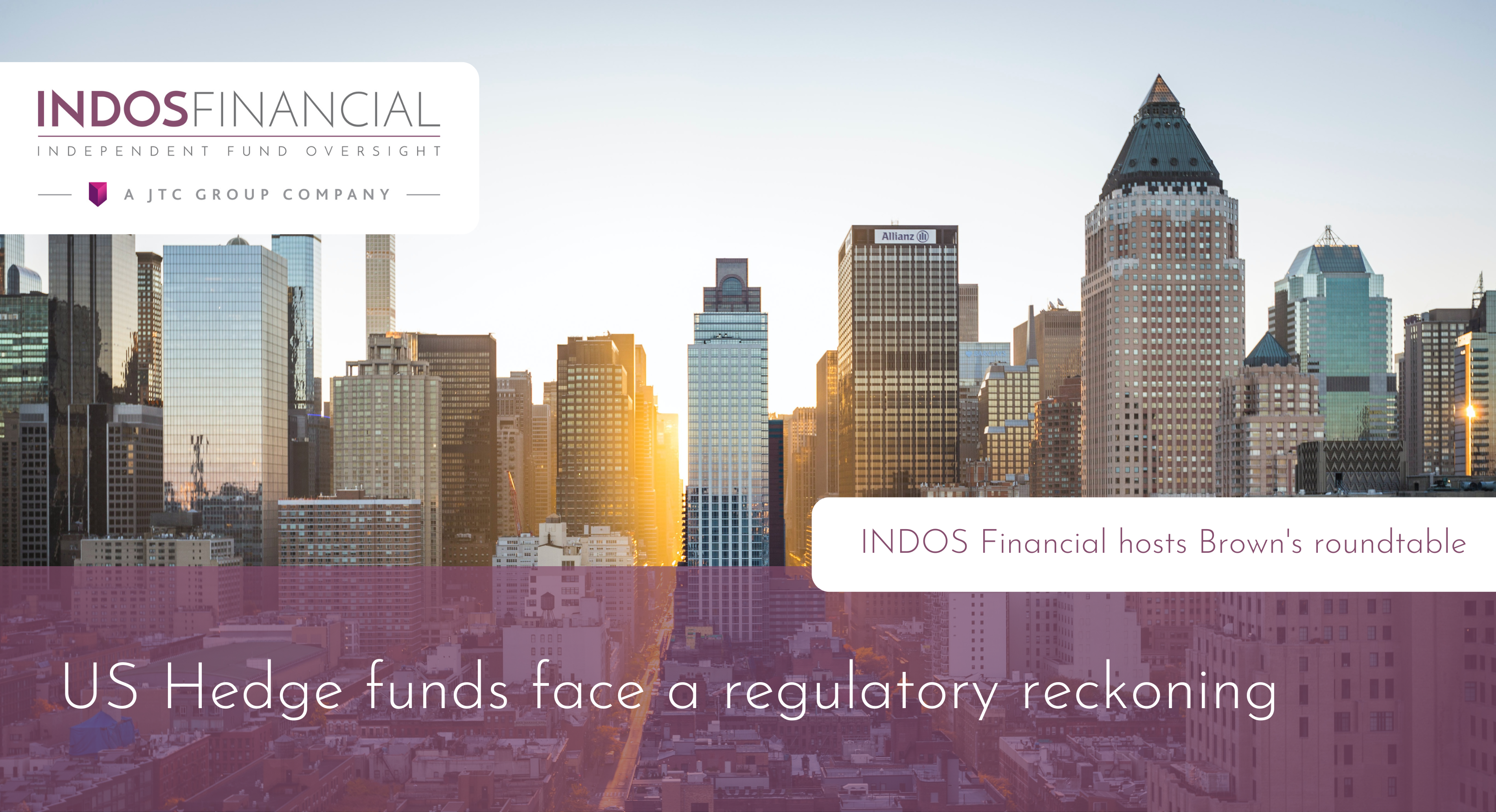Digital assets, such as crypto-currencies (i.e. Bitcoin, Ethereum), initial coin offerings (ICOs) and other digital tokens have historically been mostly traded by retail investors and family offices, who – despite the volatility associated with such instruments – were enticed by the potential for quick and eye watering returns.
The overall market size of digital assets is approximately $250 billion, or roughly a quarter of the total market capitalisation of Apple, making the industry a shadow in comparison to equities and fixed income. Nonetheless, digital assets are growing their market share.
Data from Autonomous NEXT shows there are now 287 digital asset funds trading, a 64% increase over the last year, while total fund AUM is in the region of $8 billion to $10 billion. Some industry experts believe future growth in such products could be driven by institutional investors, who despite reservations about the asset class, are starting to incorporate these instruments into their portfolios.
Larger established asset management houses have also begun to explore whether to build up exposures too. Fidelity Investments is reported to be setting up a crypto-currency exchange, while BlackRock has its own working group assessing how it can profit from this nascent market. Meanwhile, Goldman Sachs recently confirmed it was looking to trade Bitcoin futures conditional on regulatory approval being granted.
Becoming an institutional business
Digital asset flows have been hamstrung by several problems. Firstly, regulation of digital assets is in its infancy, uncertain and subject to change. Whereas some countries such as the UK have, to date, adopted a flexible approach to digital assets, others like China have outlawed ICOs completely. For global businesses with operations in multiple markets, the lack of regulatory clarity is a major disincentive precluding them from trading digital assets.
Institutions are also deterred because of a perception that the potential anonymity of the transactions opens digital assets up to abuse, not least money laundering and illicit terror financing. Reviews by international regulatory bodies such as the Financial Action Task Force are already in train, assessing exactly those sorts of risks, and outlining how firms can best mitigate them. Unless these fears are properly addressed, institutions will be hesitant about adding digital assets to their investment portfolios.
Market manipulation is also a major concern for digital asset users, a problem that has been flagged by regulators such as the US Securities and Exchange Commission (SEC). Reports have circulated that some digital asset funds enjoy unhealthy relationships with crypto-exchanges, alleging that certain market makers have been directing trading flows and recommending ICOs to favourable providers as incentives.
The primary issue, however, for institutions is that digital assets – to date – have been highly vulnerable to misappropriation by cyber-criminals from their online storage facilities. At March 2018, an estimated $1.36 billion of crypto-currencies had already been relieved from investors’ accounts. As institutions are entrusted with a fiduciary obligation to look after client money, the risk-reward of digital assets has been hard to justify.
Custody and digital assets
Safekeeping of digital assets can be done in one of two ways. The first is through self-custody, namely by keeping a private key required to exert ownership over a digital asset, in either hot or cold storage wallets, whereby they are held online or offline respectively. Hot storage of private keys is a service offered by many digital asset exchanges, but this arrangement can, and has been, exploited by cyber-criminals. By contrast, cold storage involves private keys being held completely offline in secure facilities, making them less vulnerable to being hacked, lost or stolen.
Institutional investors have made it clear they want custody providers to safeguard private keys with more security layers in cold storage. Any institutional, cold storage model is likely to make custody a far more manual process. Some experts have said such safekeeping measures are even reminiscent of a bygone era when physical share certificates were stored in vaults prior to the dematerialisation of securities. While such initiatives are certainly safer than the online digital asset custody model, large asset managers are still in a bind.
This is because regulation such as the US 40 Act rules require fund managers to hold their assets with custodians which meet certain requirements, and this means investors are likely to be prohibited from leaving their keys with any provider that is not regulated. In response, a handful of firms have entered the market and incumbent custodian providers are scoping out regulated digital asset custody offerings to satisfy growing client demand.
These firms include the likes of Digital Asset Custody Company (DACC), a custody solution purpose-built for institutional and alternative managers investing in cryptocurrencies and tokens. Elsewhere, Nomura said it would develop a digital asset custody solution in conjunction with Ledger, a security and infrastructure provider for cryptocurrencies and Global Advisors, a bitcoin-focused investment manager.
Northern Trust is also reportedly exploring whether to develop a digital asset custody solution, as is State Street. The commercial benefits of such endeavours may be limited to be begin with, although a McKinsey report said that servicing digital assets could become a growing revenue pool for custodians, for whom returns from traditional custody have been under pressure over the last decade.
Digital assets in an AIFMD world
With flows growing and less risk averse investors seeking digital asset exposures, regulators are starting to act. In fact, European Finance Ministers met in September 2018 to discuss the possibility of regulating digital assets, and later in the month the UK Treasury Committee published its long-awaited report on crypto assets. The report includes recommendations on the regulatory direction for the UK crypto industry and, in particular, calls on the FCA to develop regulation for crypto asset exchanges and ICO issuers to address consumer protection and anti-money laundering risks.
At present, few managers of funds regulated under the EU Alternative Investment Fund Managers Directive (AIFMD) are believed to be trading digital assets. Most management entities are based outside of the EU while their funds are domiciled in offshore centres such as the Cayman Islands. Such firms – moving forward – may elect to become AIFMD compliant if European demand is strong. This in turn would require funds to appoint a depositary service provider, responsible for performing oversight of the fund’s operations, monitoring cash-flows and verifying ownership of assets.
The framers of AIFMD most likely never envisaged the concept of digital assets, but it is something that depositaries need to factor into their business plans. Depositaries will need to start familiarising themselves with the technology and operating models in the evolving digital asset market. A failure to do so could result in providers missing out on potential new revenue streams or being unable to support existing clients.
The value of digital asset oversight
Should the ascendency of digital assets continue, institutional managers and their investors will value services that verify private keys are safely stored and digital asset holdings reconcile with the balances on the relevant blockchains. Given the infancy of the asset class and the general uncertainty around it, depositaries with this expertise will offer an additional and much-needed layer of protection and confidence.
It is also conceivable that firms outside of AIFMD may even start appointing depositaries to provide oversight of their digital asset safekeeping arrangements as they look to demonstrate best practices to end institutional clients. The independent depositary model is viewed by investors as being an effective tool to verify that assets actually exist and are being kept safely and securely in accordance with the principles of AIFMD.
Fund managers transacting in digital assets need to demonstrate to clients that they have robust protections and safeguards in place, something which the depositary can help facilitate. The involvement of depositaries in overseeing digital asset safekeeping will ultimately help legitimise such instruments leading to their eventual institutionalisation and entry into the mainstream beyond just niche funds and retail investors.




